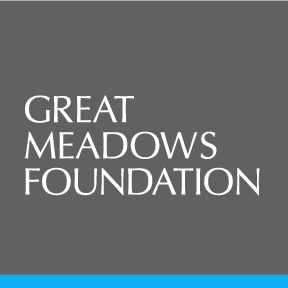
PHOTOS: Island 4. Courtesy,
Moremen Moloney Contemporary
︎ Moremen Moloney Contemporary, Louisville
Grounding
Featuring the work of three artists, Emily Hanako Momohara, Tom Brydelsky, and Kathryn Keller, Moremen Moloney’s newest exhibition Grounding focuses on the artists’ distinct approaches to landscape and nature. As a prelude to a review of landscape art, it feels appropriate to consider the space Moremen Maloney occupies.
Moremen Moloney gallery sits at the corner of Washington and Wenzel streets, a short walk from Louisville’s NULU art district. Located within the quaintness of Butchertown, secure among the historic and well-kept brick homes, Moremen Moloney opened in 2016 and since their inception have exhibited a number of powerful exhibitions. As their reputation has grown, so has the area around them. Down the street is Pyro Gallery who moved there in late 2017, relocating from their home on East Market Street. Most recently, the Butchertown neighborhood’s newest restaurant Naïve moved in next door, enlivening the block with a steady stream of guests and customers lounging in the outdoor seating.
Stepping through the front door of Moremen Moloney, you enter the large main hall of the gallery. Here work from each of the exhibited artists are represented. In the center on the right wall, three vertical pieces, grounded at the bottom and fading into deep blackness are photographs by Emily Hanako Momohara. The images are of incredible resolution and detail, the first depicting two small cactuses living on a small sculpture of mountains, trees, and a tiny Japanese home. In the center piece, a glowing, melting, wax cylinder candle is planted in deep sand. The third shows three small planter boxes with grass growing out of them, neatly stacked in a slight curve resembling a staircase.
Directly across from them a large diptych titled The Nature of my Solitude by Tom Brydelsky dominates the wall over the beverage table. Printed with a blue hue, the collage and encaustic work depicts a long grass field disappearing into a horizon covered in trees and dense fog. An encaustic frame has been gridded around the perimeter of the image leaving the center clear while the edges fade and blur. The resulting tunnel vision allows the viewer to feel surrounded by the piece, as though with a single step forward one would find themselves stepping on lush wet grass. Further down, a muted painting by Kathryn Keller titled After a Deluge rests in the left corner. Faded colors and thick brushstrokes come together to create the scene of a river, a large tree grounding the piece on the right. A blue grey sky dominates the top half of the painting.
With works from each of the artists, the gallery’s hall becomes a preview of what is to come as you continue to explore. The remainder of the works presented are divided by artist, with each occupying their own room in the gallery. The first room I enter contains the paintings, oil and watercolor, of Kathryn Keller. As a painter, Keller works mostly from life, capturing rural landscapes and interiors of her home in Louisiana. Her paintings feel perfectly content on the walls as if they were painted knowing they were meant to live out their lives within a residential space. Keller’s oil paintings have a particular age about them; they present as the kind of paintings one finds passed down through generations, or tucked neatly away in an attic. This is brought about by their muted tones and monochromatic use of paint, the application of material is coarse and almost muddy—but the tonality is saved by pops of yellow light and shades of pink. Keller’s landscapes are serene, captured moments of solitude preserved onto the canvas. A viewer can peer into her painted world and find memories of views they saw on a car ride, a field they played in as a child. Even her interiors have a this could be any home comfort about them, allowing the viewer to see themselves lounging on the couch, sitting in front of the window, or resting by the fireplace.
In the next room, the mixed media works of Tom Brydelsky, an artist from New York, hang on dark, slate colored walls. Cloudy and dramatic, Brydelsky’s work on wood panels are drenched in a moody atmosphere. The images depict sparse forests or large, barren trees that exhume feelings of nostalgia, and wishfulness. The encaustic is gridded over most of the pieces, a method that effectively breaks down the landscape then pieces it back together. This presentation slightly abridges our view of the image, and interrupts our ability to view it entirely idealistically.
Separate from his landscape works are two pieces depicting silhouettes of bodies walking through crisscrossed white space. The pieces, titled Kings Blue and Black, White graphite depict nameless figures pacing across the boards in various directions and with differing degrees of determination. The shadowy figures represent any person—existing in a void. Upon initial observation, the compositions feel chaotic, the technique simple, the crisscrossing of material is almost loud and cacophonous. And yet, I am intrigued by the nameless individuals, so busily crossing the canvas, separated from the urban space they should clearly belong in. Missing their landscape, and yet surrounded by works of landscape, the figures raise questions of how much one’s environment, one’s landscape, one’s space in community, contributes to a person’s identity.
As we begin to cross the hall to the room where Emily Hanako Momohara’s photographs are displayed, we are greeted first with her photo Island 4. Powerful and dramatic, the piece is directly across from the doorway of the final room, hanging over the fireplace and centered under the room’s chandelier. A small hand outstretched from the left holds a wooden paddle, covered in thick moss, floating in a sea of pure black. Momohara creates landscapes that mix her Japanese-American heritage, and explore issues of immigration and identity. According to her artist statement, many of her “gardens” are “fabricated in her studio”, and discuss the “failings of memory”. With this in mind, Island 4 begins to feel like a memory that is just out of reach. We grasp on to the end, but it is like a word on the tip of one’s tongue, that may or may not come back
While separately the works of the artists present individual ways of working with the landscape, it is the message produced when viewing the works together that I am most interested in. Collectively, the themes of their work merge to create a conversation that represents our society’s relationship with both natural and urban environments. Both Keller’s and Brydelsky’s pieces represent our societal ideal of the land. The image created through the framing of their supports is an untouched and ideal vision of nature. Even when taken from life, the images portrayed to the audience are the creation of imagination-- an ideal of the world seen and felt but hardly touched. These particular landscape images are a form of escape for audiences. We step back from the pieces and contemplate the imagery from within the air-conditioned walls of the gallery, safe from nature’s natural elements. Keller’s piece Patterns represents this idea of looking in to the landscape. Within the painting, an interior living area is represented, with lush and comfortable patterned fabrics that pull the viewer’s eyes from left to right across the bottom of the small piece. The patterns ground the work, while the remainder is painted in cool neutrals. A large window is painted on the left wall of the interior room, and a woman sits across a plush chair staring out the window. Like the woman peering out from the window, we peer into Keller’s frames to appreciate the view before us—and are in many ways the most important aspect of the painting. Without our gaze the layers of paint are meaningless on the canvas, for it is our gaze that romanticizes the idea of the landscape and of it nature itself. As an audience we are more content to look in to the landscape, to feel inspired by it, moved by it, or as with Brydelsky’s work—to be overcome with nostalgia or melancholy. As opposed to actually physically be in it. Once placed into actual landscape, the reality of nature (or lack of) becomes a distraction—the temperature, the mosquitos, the noise.
In contrast to the romanticism of Keller and Brydelsky, Momohara’s work presents nature and landscape in a state of heightened control. Within society, our control of the land is multifaceted. We clear forests to create subdivisions and lay down asphalt, we control the world’s water with man-made dams, and we exclude ourselves from the natural world by confining our bodies to our urban environments. The only nature we interact with are the man-made parks our government provides us—and even then, we are restricted to pre-planned trails and systems of movement. Perhaps we could consider our own parks another system of societal control, where even our designated “free time” is actively supervised. This control is perfectly represented in Momohara’s Golden Pupa where butterfly chrysalises are clipped to a wire grid, displayed against the blackness common across all of Momhara’s work. Their careful organization and display is in great opposition to the pupa’s stage of life and the metamorphosis contained within their golden casts. And yet in the context of this exhibit it makes perfect sense: the control of the life-span, the environment where they will emerge, is carefully contained and planned, set on display like all the art-works in Grounding.
Leaving Moremen Moloney, we are returned to the heat of Louisville’s Summer season, and the smells of Butchertown. Walking through this ever-livening neighborhood, here we can decide how similar we are to the nameless, faceless, individuals of Brydelsky’s artworks. Are we grounded by the neighborhood that defines us, or simply controlled by the structures and ideologies that guide us through our day?
-
Grounding is on display at Moremen Moloney Contemporary until July 21.
Moremen Moloney Contemporary is located at 939 East Washington Street, Louisville, KY, 40206 and is open Thursday through Saturday from 1-4p or by appointment.
Notes:
Jessica Oberdick, Guest Contributor to Ruckus
7.3.18
 Kathryn Keller, Patterns.
Kathryn Keller, Patterns.

Install.

Tom Brydelsky - The Nature of my Solitude.
 Emily Hanako Momohara - Golden Pupa
Emily Hanako Momohara - Golden Pupa
 Install.
Install.






